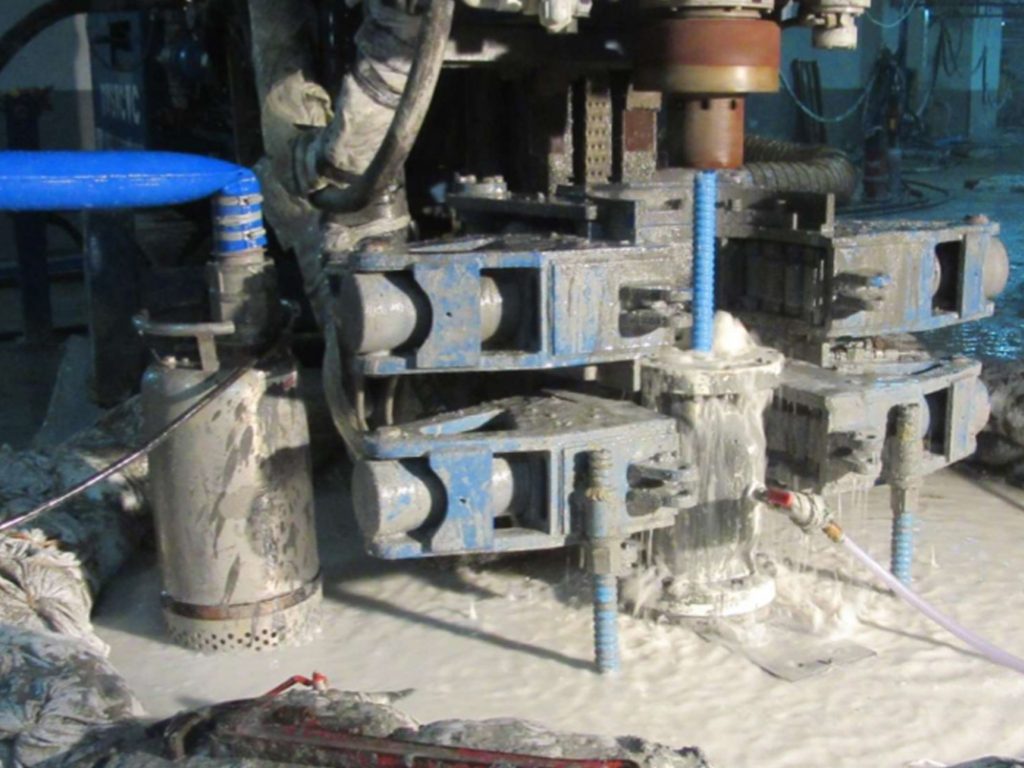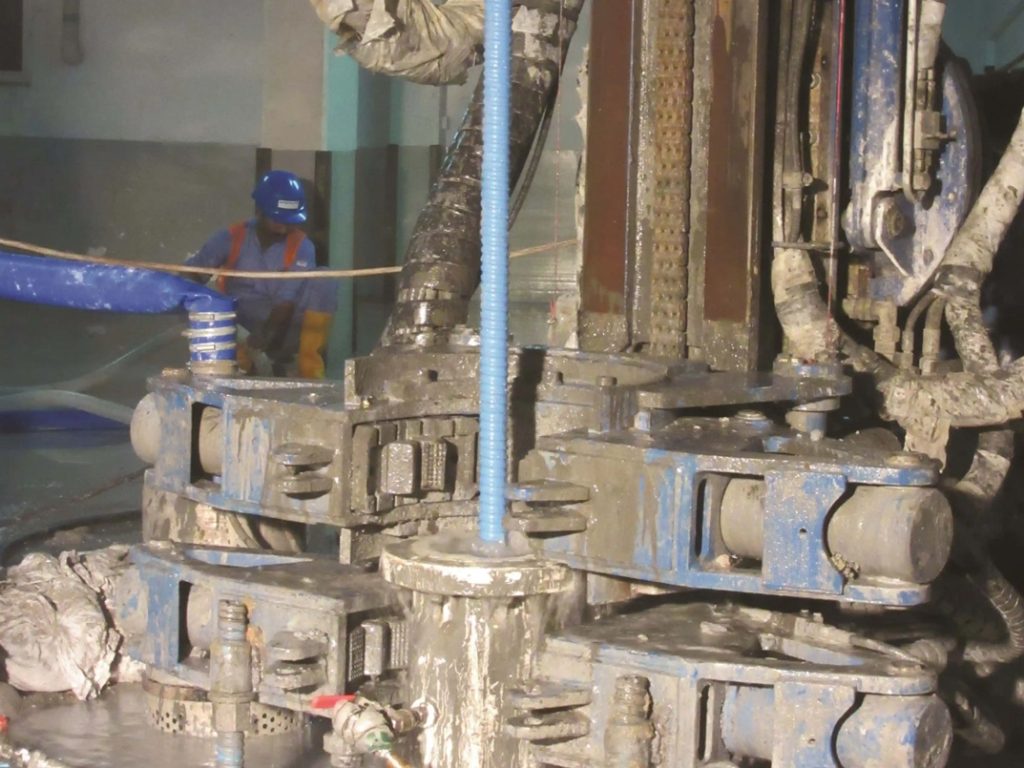
TITAN Preventer is used in conjunction with micro-piles in areas where water ingress is a distinct possibility, for example in basement areas and underground car parks. By using the Preventer system, dewatering is often not required.
The Preventer valve system is connected to a compressor via an air line. The system is operated by opening and closing the rubber insert, by applying air pressure to inflate (close) or deflate (open) the rubber insert. When the rubber insert is in the closed position, it restricts the ingress of water, whilst pressing tight against the micropile, allowing the installation and grouting to be completed.
The Preventer is fixed securely to the structure prior to commencing the installation. It is removed once the grout has completely cured, exposing the top of the micropile ready for the head detail to be constructed
